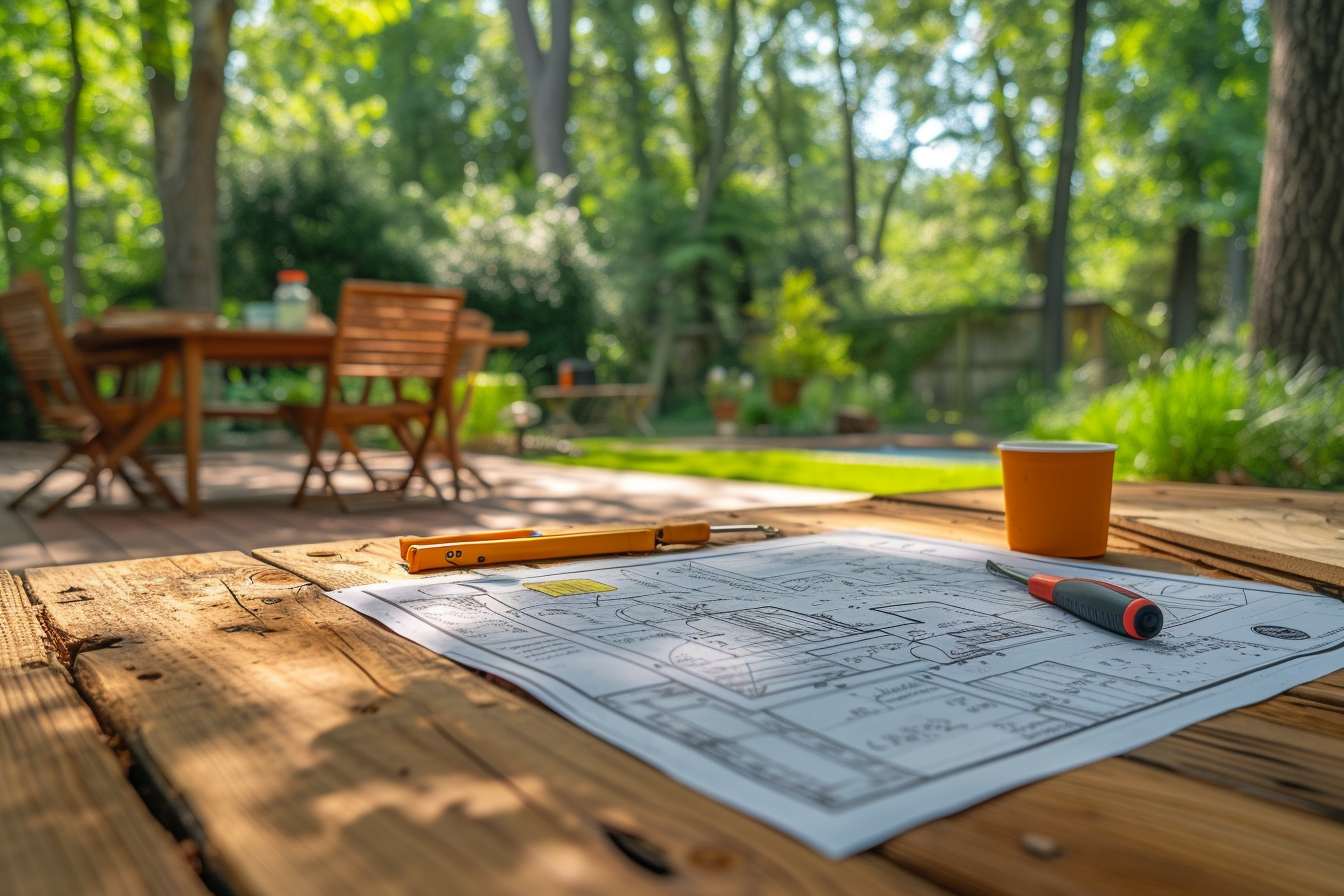Creating the perfect wooden deck for your home is both an art and a science. It requires an eye for aesthetics, a clear understanding of your needs, and a well-thought-out plan that considers functionality, sustainability, and safety. A deck not only extends your living space but also adds to the character and value of your home. With careful planning and attention to detail, you can design and build a wooden deck that is a true reflection of your personal style and one that can be enjoyed for many years to come.
Knowing your local regulations and materials
Start your deck-building journey with research. Knowledge of local building codes is essential before diving into the design process. Depending on where you live, there may be specific regulations concerning the size, height, and construction standards of your deck. Additionally, selecting the right materials can make or break the longevity and aesthetic appeal of your deck. Pressure-treated lumber, hardwoods like ipe or teak, and newer composite materials each have distinct advantages and considerations with regards to cost, maintenance, and appearance.
Designing with purpose and functionality
Consider how you plan to use your deck. Will it be a tranquil retreat for quiet evenings, a robust space for social gatherings, or a functional area for outdoor dining and cooking? The intended purpose of your deck will heavily influence its design, from size and shape to the inclusion of features like built-in seating, planters, or a pergola. Furthermore, the deck should be a seamless extension of your home, with careful thought given to how it integrates with your home’s existing architecture and landscaping.
Maximizing layout and space considerations
Strategic layout planning creates the most effective use of space. Think about the deck in terms of zones, much like you would an indoor living space. Where will the dining area be located? Is there enough room for lounging? How will foot traffic flow from one area to another? Take into account the position of the sun throughout the day as well as the direction of prevailing winds to create the most comfortable environment possible.
Achieving a harmonious aesthetic
Unify your deck design with the right aesthetic choices. The materials you select aren’t just about durability—they also set the tone for your deck’s look. Will it have a modern feel with sleek lines and minimal detailing, or a classic, rustic charm with robust features and intricate woodwork? The stain or paint color you choose will also influence the feel of the space, and when tastefully coordinated with your home’s color scheme, can create an inviting and cohesive aesthetic.
Prioritizing safety and accessibility
Safety is not optional; it’s a requirement. Your deck must be designed with the safety of all who will use it in mind. This includes proper railing designs that comply with height and spacing regulations as well as sturdy, easy-to-navigate stairs if your deck is elevated. Accessibility considerations are equally important. Ensuring that your deck is usable by people of all abilities can involve adding features like ramps and wide doorways.
Sustainable practices and longevity
Building with sustainability in mind benefits everyone. Selecting responsibly sourced wood or eco-friendly composite materials is a choice that reduces environmental impact. Thoughtful consideration of the deck’s orientation and integration with native plantings can also enhance the sustainability of your outdoor space. A sustainable approach can extend the life of your deck, reducing the need for future repairs or replacements, which ultimately conserves resources and saves money.
Detailing for durability and low maintenance
Focus on durability to ensure your deck withstands the test of time. Choices in construction details, such as the use of stainless steel hardware, proper spacing between boards for drainage, and the application of high-quality sealants are vital for the longevity of your wooden deck. Low-maintenance materials and design choices may involve a higher initial investment but can save considerable time and effort in upkeep.
Smart budget management

Effective budgeting is critical to your project’s success. A well-designed deck doesn’t have to break the bank, but it also shouldn’t skimp on quality. Thoroughly evaluate the cost of materials, labor, maintenance, and potential upgrades or additional features. It’s smart to allocate a portion of your budget for unexpected costs that can arise during the building process. Regular budget reviews during the design and construction phases will ensure you stay on track financially.
Selecting the right professional team
Partnering with the right professionals can make all the difference. Whether you are taking on a DIY project or hiring a contractor, it’s vital to have the right team in place. For those seeking professional help, it’s essential to choose a contractor with experience, strong references, and a portfolio that demonstrates a track record of quality workmanship. Communication between you and your contractor or construction team should be clear and continuous throughout the project to ensure your vision is effectively executed.
Designing and building your perfect wooden deck is a rewarding endeavor that enhances your home and lifestyle. By considering local regulations, designing with purpose, maximizing layout, ensuring safety, focusing on sustainability and durability, managing your budget wisely, and selecting the right team, you’ll be well on your way to creating an outdoor space that’s beautiful, functional, and long-lasting. While this article does not wrap up with a traditional conclusion, it aims to empower you with the insights and strategies needed to embark on this exciting project with confidence.
